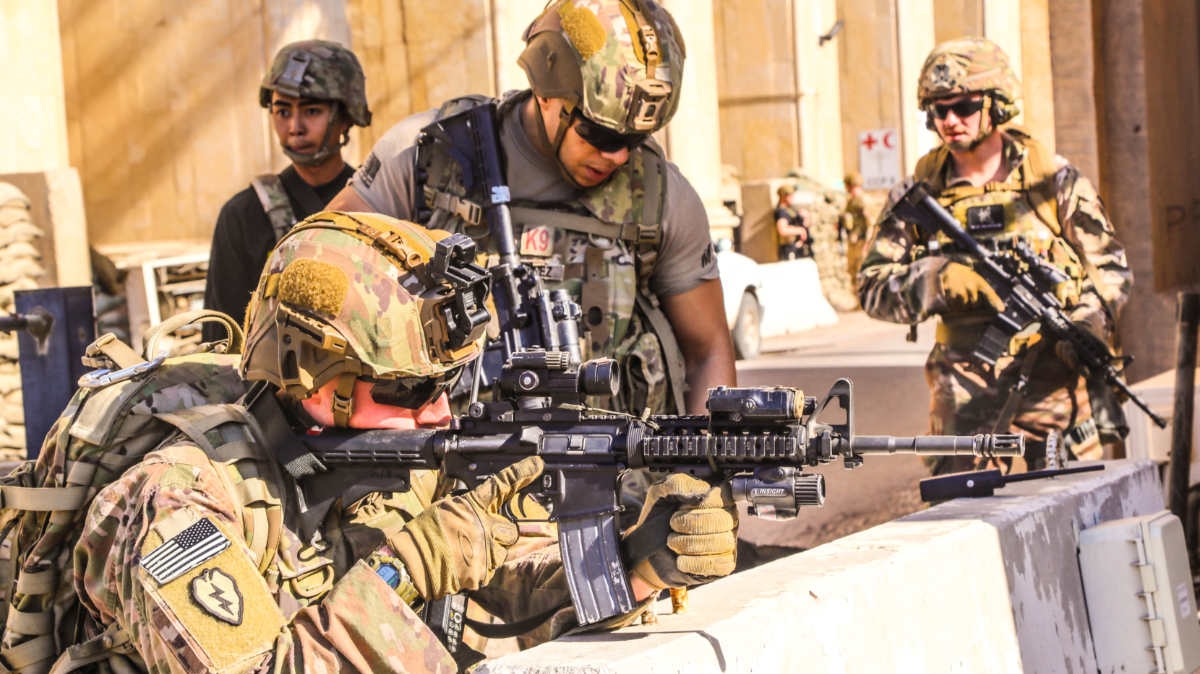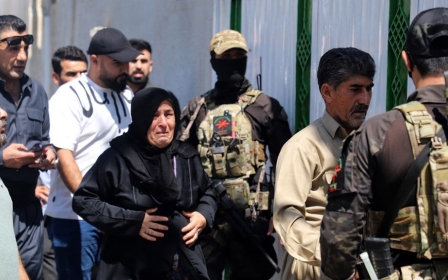US and Iraq agree on plan to withdraw US troops: Report

US and Iraqi negotiators have agreed on a plan to withdraw American soldiers from Iraq after US troops came under repeated attack by Iranian proxies.
According to Reuters, the agreement still needs “a final go-ahead” from leaders in Baghdad and Washington, but is seen as a done deal, with one US official telling the news agency that “it's now just a question of when to announce it”.
The deal would see hundreds of US soldiers pulled out of Iraq in September 2025 and the last remaining US troops in the country departing by the end of 2026.
Critics of the US’s “forever wars" are likely to welcome an agreement, but it could raise concerns among US policymakers and allies in the region who are focused on Iran’s influence.
Formal talks on the status of the roughly 2,500 US troops in Iraq began in January but were delayed amid tensions over Israel’s war on Gaza.
New MEE newsletter: Jerusalem Dispatch
Sign up to get the latest insights and analysis on Israel-Palestine, alongside Turkey Unpacked and other MEE newsletters
Iranian-backed militias have launched at least 70 attacks on US forces in Iraq since 7 October. In early January, the US launched a drone strike in Baghdad that killed Mushtaq Taleb al-Saidi, a senior commander in the Popular Mobilisation Units, the umbrella organisation of Iraqi state-funded and Iran-aligned Shia militias.
US strikes in Iraq have been condemned by Iraqi Prime Minister Mohammed Shia al-Sudani, who has upped his calls for a withdrawal of US troops in recent months.
Expelling US forces from Iraq is a long-term goal of Iran, which exerts outsized influence over its neighbour through energy ties, religion and Shia militia groups with tens of thousands of fighters.
Iraq-Syria connection
Iraq's population is split between a Shia majority and Sunni Muslim and Kurdish minorities. The latter has carved out a semi-autonomous region in northern Iraq.
The plan agreed by Iraq and the US says that all US-led coalition forces will leave Ain al-Asad airbase in western Anbar province and significantly reduce their presence in Baghdad by September 2025.
US and coalition soldiers will stay in Erbil, in the Kurdish semi-autonomous region, for just one more year. The withdrawal of US troops from this region could make the US military presence in northeastern Syria unsustainable.
“Erbil is crucial for supporting Syria,” Andrew Tabler, a former Middle East director at the White House’s National Security Council, previously told MEE.
“The US needs to have the ability to move troops and supplies on the overland route between the Iraqi frontier and Syria.”
The US’s legal justification for being in Syria, home to roughly 900 US troops, is also based on Washington’s agreement with Baghdad.
US troops are officially in Iraq and Syria to ensure the enduring defeat of the Islamic State militant group, but their presence is also seen as a strategic wedge against Iran and its proxies.
Invasion, surge and redeployment
If US troops withdraw, they will do so at a time when other regional powers have exerted military strength over Iraq’s weak central government.
On Monday Turkey launched air strikes against armed Kurdish groups in northern Iraq. In August Ankara and Baghdad agreed that a Turkish base in northern Iraq would be transferred to the Iraqi Armed Forces, and a Turkey-Iraq joint training and cooperation centre would operate there.
The roughly 150,000 members of the Popular Mobilisation Units were allocated an additional $700m dollars in Iraq’s three-year budget released in 2023.
The reported deadline for US troop withdrawals falls after the US 2024 presidential elections. In a previous case, the Biden administration followed through on former President Donald Trump’s deal to withdraw troops from Afghanistan.
US troops entered Iraq with the 2003 invasion that toppled Saddam Hussein.
Troop numbers peaked at 168,000 during the so-called surge, but by 2011 American soldiers were fully withdrawn by President Barack Obama. Within three years, the Islamic State emerged in Syria and Iraq and in 2014 Obama redeployed troops .
Middle East Eye delivers independent and unrivalled coverage and analysis of the Middle East, North Africa and beyond. To learn more about republishing this content and the associated fees, please fill out this form. More about MEE can be found here.






